Gardening enthusiasts often encounter the challenge of dealing with white fungus, commonly known as powdery mildew, which affects a wide variety of plants.
This fungus appears as white, powdery spots on leaves, stems, and sometimes flowers or fruits.
While not typically fatal, it can hinder a plant’s growth and overall health. Understanding how to eliminate white fungus on plants is crucial for maintaining a healthy garden.
In this comprehensive guide, we explore how to get rid of white fungus on plants.
From household remedies to preventive measures, we provide various solutions catering to gardening needs.
Whether you’re an indoor plant lover or an outdoor gardening enthusiast, these insights will equip you with the knowledge to tackle white fungus efficiently and sustainably.
Understanding White Fungus in Plants
White fungus, commonly referred to as powdery mildew, is a prevalent issue faced by gardeners and indoor plant enthusiasts alike.
This fungal affliction manifests as white, powdery spots on leaves, stems, and sometimes even flowers and fruits.
Though it rarely kills plants outright, it can significantly stunt their growth and vitality.
Identifying and treating this issue promptly is key to maintaining healthy plants.
Identifying the Causes of White Fungus
The battle against white fungus begins with understanding its causes.
The primary factor contributing to the development of powdery mildew is high humidity combined with moderate temperatures, typically between 60°F and 80°F.
Poor air circulation, overwatering, and insufficient sunlight further exacerbate the problem.
Recognizing these triggers is the first step in learning how to get rid of white fungus on plants.
What Causes the White Mold on Plants?
To know how to get rid of white fungus on plants, it is first essential to know the cause behind this problem.
The prime cause of the white mold is the humid climate in some regions that some plants cannot bear.
High, humid climate conditions without proper airflow restrict the plants from growing organic, and it is the prime reason you have seen the powdery substance all over your plans.
Plants also need sufficient space to grow, and adjusting them together will not allow them to breathe and intake proper air circulation.
Over-watering your plants can also lead to white molds, and lack of sunlight will cause powdery mildew.
How to Get Rid of White Fungus on Plants? 5 Ultimate Ways
Getting rid of these unwanted guests of your plants is easy and quick as you need to search for some of the ingredients at your home and mix them to make a DIY spray for the white mold on plants.
Let us investigate all the ingredients and methods you would require to treat them.
1. Baking Soda to Treat the Molds
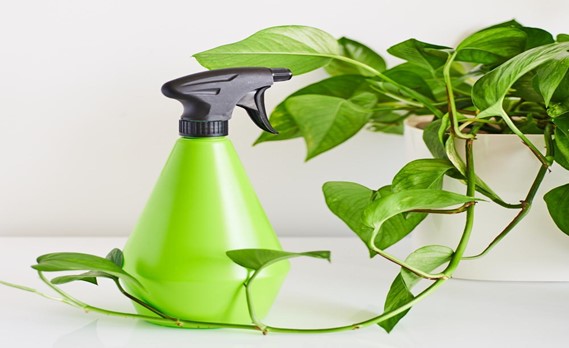
Baking soda, a common household item, is surprisingly effective against white fungus on plants. Here’s how to leverage its properties:
- Mix one tablespoon of baking soda with half a gallon of water. This creates a mild alkaline solution that inhibits the growth of fungus.
- Add half a teaspoon of liquid soap. The soap helps the solution stick to the leaves and stems, ensuring better coverage and effectiveness.
- Pour this mixture into a spray bottle for easy application. Spray liberally on the affected areas, covering the underside of leaves where mildew often hides.
- Let the plant air dry. The solution needs time to work on the fungus, so avoid rinsing the plant immediately.
- Repeat this treatment regularly, especially during damp weather when mildew thrives.
- In cases where the fungus is stubborn, enhancing the solution with potassium bicarbonate can increase its potency, offering a stronger defense against mildew.
While you try mixing all these mixtures, make sure you are aware that applying the mixture may affect the growth of your plants.
So, avoid applying it on the roots and soil of the plant, and if the white mold is in that area, you may need to change the soil occasionally.
2. Neem Oil Against White Mold on Plants
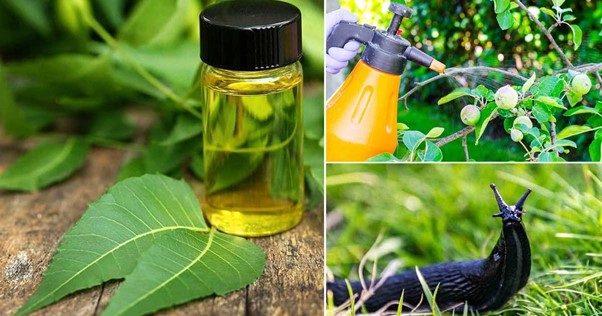
Neem oil is a natural, plant-based oil renowned for its pest-repellent and antifungal properties. Here’s how to use it effectively:
- Mix two teaspoons of organic neem oil with half a gallon of water. This dilution is critical to avoid harming the plant while still being effective against the fungus.
- Incorporate a small amount of dishwashing soap. This acts as an emulsifier, helping the oil and water mix uniformly.
- Transfer this mixture to a spray bottle. Spray it on all parts of the plant, especially areas showing signs of white fungus.
- Neem oil tackles white fungus and deters many common pests, making it a dual-purpose treatment.
- Regular applications can help prevent the recurrence of white fungus and keep pests at bay, promoting overall plant health.
You can use this mixture on the soil and every part of the plant, as it would not harm your plant’s growth and will also prevent it from any white molds.
You can also prevent and use this mixture to eliminate pests or insects on your plant.
3. Apple Cider Vinegar for the Win
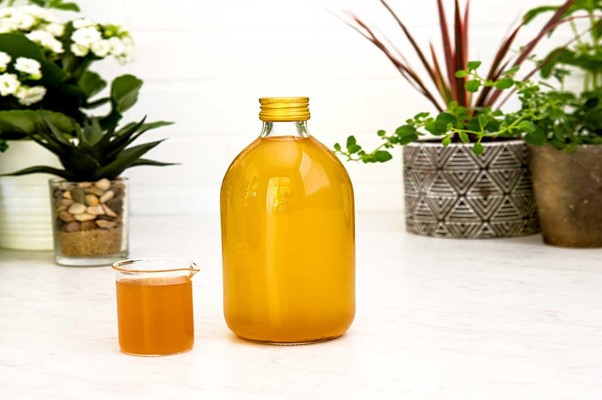
Apple cider vinegar’s natural acidity makes it an excellent antifungal agent. Here’s how to apply it:
- Mix 1½ tablespoons of apple cider vinegar with half a gallon of water. This diluted solution is strong enough to combat mildew without damaging the plant.
- White vinegar can be used for a stronger solution, but it’s crucial to conduct a patch test on a small area of the plant first to ensure it doesn’t cause damage.
- Spray the mixture thoroughly over the plant. The acid alters the pH on the leaf surface, creating an inhospitable environment for the fungus.
- Regular application, particularly during the early stages of infection, can effectively control and prevent white fungus.
The white vinegar is stronger than the apple cider, so it is better to do a patch test by applying the mixture on one leaf.
If you do not see the leaves react negatively to the mixture, you can spray them all over the affected area of the plant.
4. Cow’s Milk to Eliminate White Mold on Plants
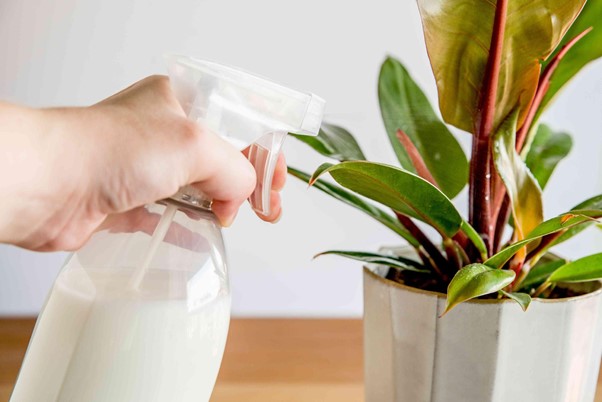
It is a natural ingredient found in every household and is an effective remedy to cure all the white molds on your plants.
Milk can be sprayed on the affected area and would not harm the growth of the plants as any other chemical-based sprays would.
Cow’s milk has some nutrients with antifungal properties that help reduce the white mold on plants without causing any side effects on the plants’ growth.
The lactic acid in cows’ milk helps eliminate the white powdery mildew from plants.
How it will Work:
- Mix cow’s milk with water in a 40:60 ratio. This dilution is effective yet gentle on plants.
- The proteins in milk react with the sun’s rays, producing free radicals that are believed to be toxic to the fungus.
- Spray this solution on the affected areas of the plant, allowing it to dry in direct sunlight.
- This treatment is safe for the plant and can be used as a preventive measure during humid conditions.
5. Prevent the Powdery Mildew Before It Is Too Late
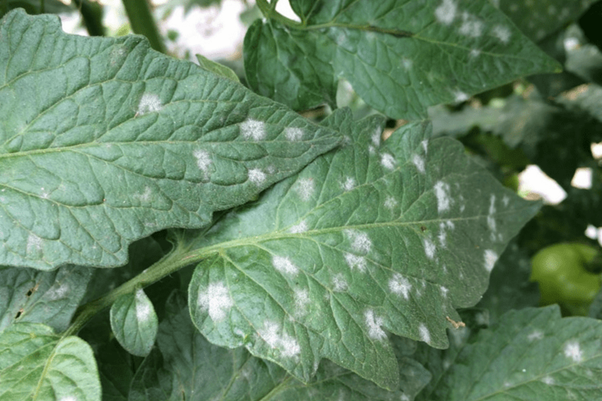
Beyond treatments, environmental factors play a crucial role in controlling white fungus. Here are some adjustments to consider:
- Ensure plants receive enough morning sunlight. Sunlight is a natural antifungal agent, helping to dry out excess moisture that encourages mildew growth.
- Proper spacing between plants is vital for adequate air circulation. This reduces humidity around the foliage, a key factor in preventing fungal growth.
- Regular inspection of plants is essential. Early detection of white fungus makes treatments more effective.
- A balanced watering schedule is crucial. Overwatering can create damp conditions favorable for mildew. Water plants at the base rather than overhead to keep leaves dry.
- If plants are potted, ensure they have good drainage and are not sitting in water.
Some plants like being in humid temperatures, and some plants like cold temperatures, so it is difficult to prevent.
But you can plant shrubs or bushes that can thrive in a humid climate, making it easy for both the plant owner and the plant to prevent it from white mold.

